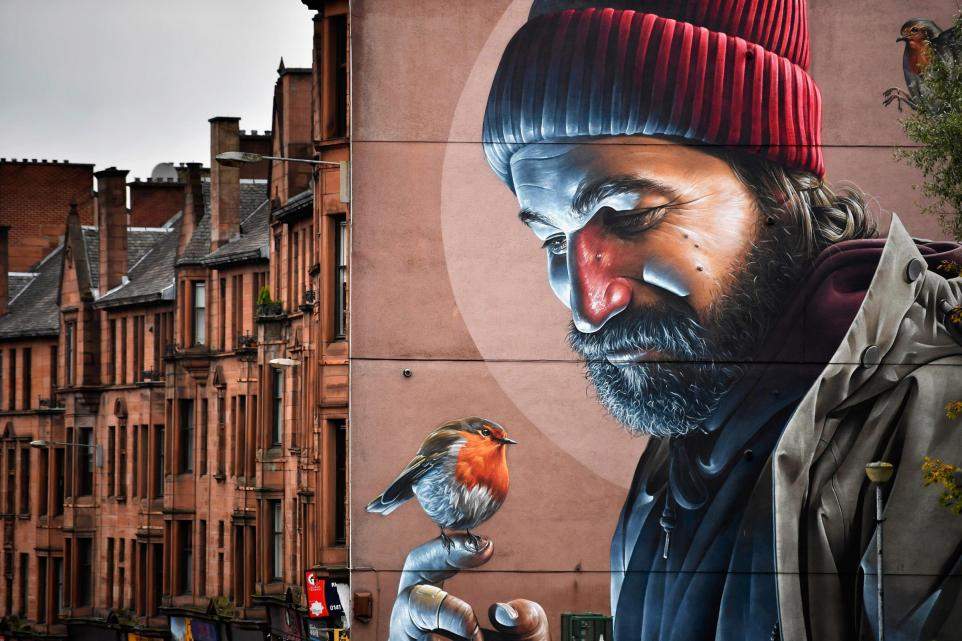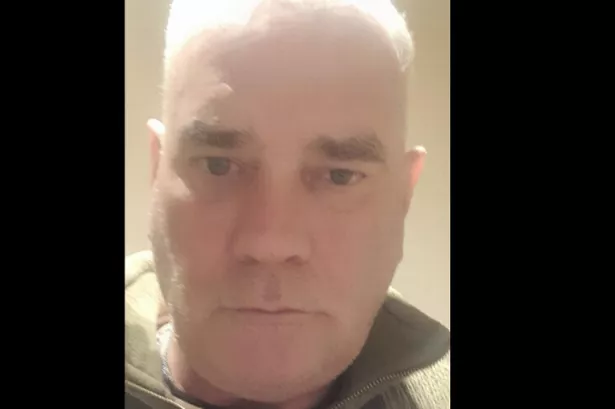Glasgow’s Famous Street Art Threatened by Commercial Interests: Urgent Regulatory Action Demanded
In the city of Glasgow, a local MSP has raised a warning flag concerning an alarming trend where businesses seem to be taking advantage of a perceived regulatory loophole. This tactic allows them to emblazon large mural advertisements on city building ends without seeking prior approval from the local authorities.
This issue was brought into sharp focus following the appearance of a massive hand-painted mural sponsored by a prominent shoe retailer, Clarks, on the side of an apartment block. This act stirred widespread consternation among the local inhabitants, who voiced fears about the potential detrimental effects on Glasgow’s globally celebrated mural scene due to insidious commercial encroachment.
Created as part of a new brand promotion campaign, the mural promoting Clarks’ desert boots materialized on the gable end of a building on Duke Street in Glasgow’s Dennistoun district last October.
The Dennistoun Conservation Society questioned the circumstances under which Clarks was allowed to create this massive mural. Accomplished photographer and filmmaker, Chris Leslie, recipient of a BAFTA Scotland award, expressed apprehensions that this might set a dangerous precedent for an influx of oversized semi-permanent advertisements within the city.
After facing backlash, the mural was eventually removed after a few weeks. A representative from Clarks emphasized to The Herald that it was merely a short-lived art installation.
A similar occurrence unfolded when another large-scale commercial mural, this time endorsed by the Royal Bank of Scotland, surfaced on a city building, only to be covered up a few weeks later. This mural adorned the Victor Paris Bathrooms showroom off the Broomielaw, an area that had previously been the backdrop for temporary commercial murals by big brands such as Facebook and Adidas.
In defense of their mural, an RBS representative stated, “Glasgow has a long and proud tradition of creating public art that can be enjoyed by everyone. Our aim was to pay homage to this tradition and our ongoing commitment to Scotland by installing our first Royal Bank of Scotland mural in Scotland, in the heart of Glasgow’s International and Financial Services District.”
Mural advertisements, or what some call a “creative spin on outdoor advertising,” often involves large-scale, vibrant paintings that street artists manually apply to city walls. These murals, like the one commissioned by Clarks, are usually carried out by professional artists like Josephine Hicks based in London.
Major brands lean towards murals to advertise their products due to the relatively relaxed rules and guidelines about where and when these ads can be put up.

In both instances involving Clarks and RBS, it was understood that neither of the artworks obtained official permission from Glasgow City Council. A council spokesperson responded to these events by saying, “This is not an issue where we’ve had to intervene, and it appears the matter has been resolved locally.”
Local regulations stipulate that unless a building is listed or located in a conservation area, planning permission is generally not needed for a commercial mural. Nevertheless, advertising consent is typically required from the council to display a mural for advertising purposes, irrespective of the location.
It seems businesses are resorting to commissioning temporary commercial murals, lasting less than four weeks, in order to circumvent seeking advertising consent or planning permission from Glasgow City Council. This strategy is an apparent exploitation of the “28 day rule” in The Town and Country Planning (General Permitted Development) (Scotland) Order. This provision allows land or buildings to be used for an “alternative use” for less than four weeks without formal planning permission, usually utilized by local event organizers.
Paul Sweeney, Glasgow MSP, has urged a stop to this practice, expressing concern that it grants excessive freedom of businesses to use Glasgow buildings indiscriminately. He asserted that, while murals can significantly uplift the city’s aesthetic and pay tribute to Glasgow’s unique heritage and accomplishments, the proliferation of oversized commercial designs due to exploitation of a planning law loophole is unacceptable and must be curbed in the future.











